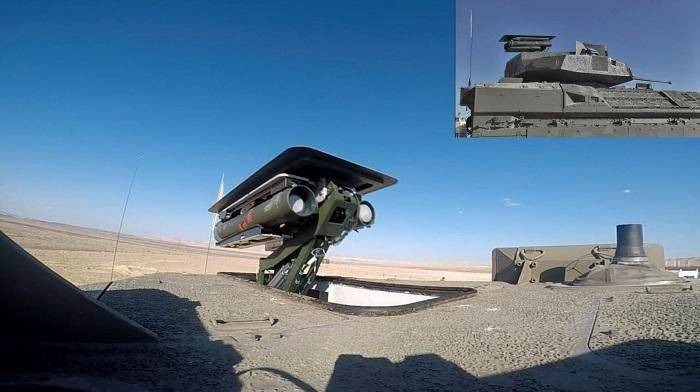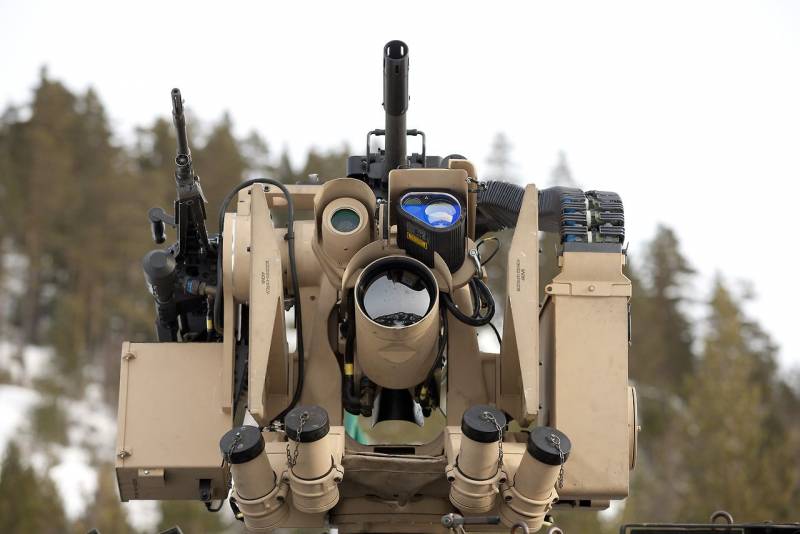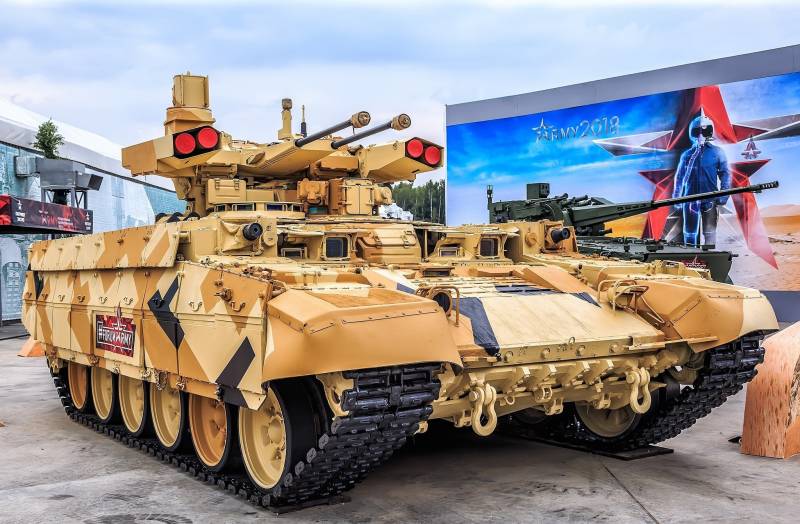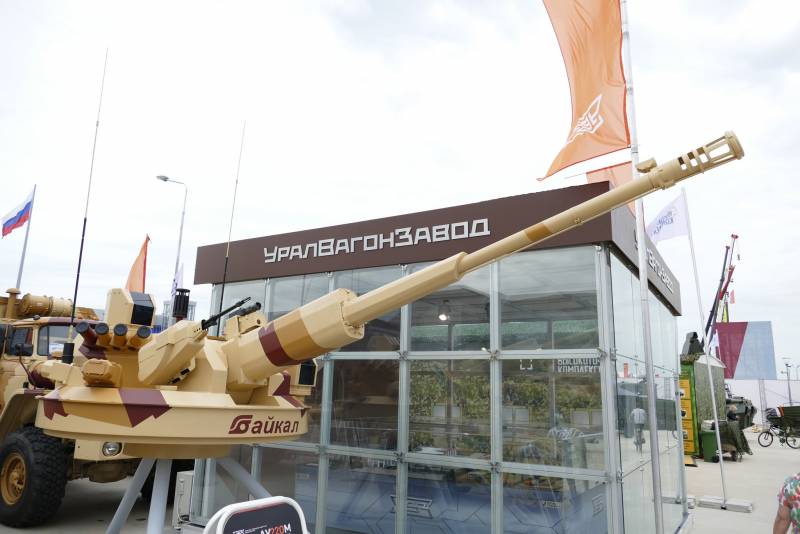Uninhabited combat module: an expensive toy or an element useful in battle?

The appearance of uninhabited combat modules
Uninhabited combat modules, or, as they are also called, remotely controlled combat modules (DBMS), first appeared in the late 1980s. The need for such devices was felt by one of the most howling armies in the world - the Israeli. It was in this country that uninhabited combat modules were widely used; the Israelis installed a DBM on their armored vehicles and armored personnel carriers. The main purpose of the appearance of such installations was to reduce losses among personnel. Also, it always helps to reduce the number of crew of military equipment. Currently, Israel is actively continuing to develop such types of weapons, well aware of their importance in modern realities. One of the latest Israeli developments is an uninhabited turret with cannon and missile weapons for the heavy armored personnel carrier "Namer", built on the basis of tank Merkava.
The Israelis immediately appreciated the combat effectiveness of such modules. Their loss of manpower from random or dense fire during operations in the Arab territories decreased several times. At the same time, uninhabited combat modules showed their effectiveness both in the context of counter-terrorism operations in the open and in dense urban areas.
Following Israel, the Americans showed interest in uninhabited combat modules. The US Army felt the need for such weapons during the second Iraqi campaign, which began in 2003. The serial production of uninhabited combat modules for the needs of the American army was launched in 2006-2008. Moreover, suppliers of such systems were not only American companies, but also companies from Israel and Norway. In the end, the units that performed combat missions in Iraq used the 700 uninhabited RWS M151 Protector combat modules manufactured by the Norwegian company Kongsberg, as well as the 200 M101 CROWS modules produced by the American company Recon Optical. Typically, DBMSs were installed on HMMWV armored vehicles of various modifications, as well as Stryker wheeled armored personnel carriers.
It is worth noting that uninhabited combat modules were previously used in aviation or navy, but in the ground forces began to be actively used only in recent decades. All such installations are implemented within the framework of one concept, when the main armament of the combat vehicle is carried out in a separate module, and the crew or crew is either reliably hidden by armor in the hull or capsule, or located at a distance from the combat module. At the same time, the crew or crew, being in conditions of the greatest possible security, are able to confidently hit targets on the battlefield, including using high-precision weapons. In modern realities, when local military conflicts arise around the world, the need for such modules, which increase the combat capabilities of motorized rifle units and provide reduced personnel losses, is only increasing.
In Russia today, a large number of various models of DBMs with machine-gun, cannon and cannon-rocket weapons have been created. In this regard, Russian designers are following global trends, although in our country such modules are still less common than in the armies of Western countries and are not mass-produced. With the exception of BMPT Terminator issued in homeopathic quantities, in which the main armament is carried out in a separate remotely controlled combat module.
The debate about the usefulness of an uninhabited combat module
Despite the fact that uninhabited combat modules with different composition of weapons are created, mass-produced and used in combat operations, disputes about their effectiveness and usefulness arise from time to time. If such modules were created by only one country and did not find wide application, this could still be said. However, such weapons are actively being developed by a huge number of states, have already been adopted and are used in hostilities. The same Russian BMPT “Terminator” were tested in combat conditions in Syria. Therefore, one should not even doubt the competence of designers who are constantly working on new remotely controlled combat modules.
The main arguments of the opponents of such combat modules, sometimes called armaments for parades and shows, include the likelihood of light damage by small arms and the fragments of shells and mines from complex optical devices and other important equipment that are part of the fire control system. At the same time, in real combat conditions, all the optics that are important for the FCS are covered with armored shutters and bulletproof glass. Naturally, sophisticated optics, radars, sensors, like any other equipment, can be destroyed by concentrated fire or direct hits, including from large-caliber automatic weapons and automatic guns. But with the same success it is possible to disable modern panoramic and thermal imaging sights on tanks and other armored vehicles and with inhabited towers, which has been repeatedly demonstrated during the local military conflicts of recent decades.
At the same time, dense enemy fire or sniper fire, which poses the greatest threat to modern optics, is dangerous only at a limited range. Most of all in city conditions, when the enemy can get close to armored vehicles. But in this case, it is worth fearing not the defeat of the elements of the MSA, but the destruction of the entire machine together with the crew. At the same time, modern uninhabited combat modules are equipped with sophisticated reconnaissance and target designation systems, thermal imagers, target tracking machines, which significantly increases the fire capabilities of such devices. The presence in their composition of automatic artillery weapons and ATGM allows you to hit targets at a great distance. Therefore, armored vehicles equipped with such modules can confidently hit targets at distances up to 3-5 kilometers. At such a distance, a machine with a DBM is invulnerable to enemy fire, no matter how dense it is. And most snipers of squads or platoons are armed with weapons that can confidently hit growth targets at a distance of up to 600, a maximum of 800 meters. The use of professional snipers or fighters of special operations armed with large-caliber ultra-precision sniper rifles (anti-material) capable of hitting targets at a distance of up to 1,5-2 kilometers to fight armored vehicles is also unlikely. In this case, it is much easier to use anti-tank systems, which, if the outcome is successful for the calculation, can disable any military equipment.
However, not every enemy in the arsenal has a sufficient number of anti-material rifles, anti-tank systems and missiles for them. Modern wars are not long ago clashes of equal strength in armies. Often, military operations are conducted against terrorist or weakly armed separatist units. In such conditions, armored vehicles equipped with uninhabited combat modules are especially effective, allowing you to confidently hit targets from a safe distance for the crew. As experts say today, thanks to the use of modern LMS in combat modules with good software and a computer component, the reconnaissance and targeting process has been significantly reduced compared to inhabited towers. It is the fast phase of guidance and the subsequent high-precision target destruction that is one of the advantages of modern DBMS.
The disadvantages of such modules are often also attributed to their poor maintainability in the field or in the rear of the army. Indeed, modern systems are very complex both mechanically and electronically. With a high degree of probability, such a module can not be repaired in the field workshop, which will require the sending of either a dismantled module or the entire machine for factory repair. On the other hand, in modern local wars this is no longer as critical as it would be in a large-scale armed conflict since the Second World War. At the same time, uninhabited combat modules save the most valuable resource of any country - human lives. The loss of a trained soldier to the state will potentially result in much greater material losses than the repair of the module. So this has long been no longer a matter of price, but a matter of development and improvement of technology.
Modern remotely controlled combat modules are not a tribute to fashion and not a waste of money. First of all, these are highly efficient and very complex systems that can significantly increase the combat capabilities of motorized rifle units while reducing human losses. Modern wars are getting closer to becoming machine wars. This is evidenced by the constant development of unmanned vehicles and a variety of robotic systems. Progress cannot be stopped, uninhabited combat modules are part of this inexorable progress in military affairs, and far from its most radical part.



Information